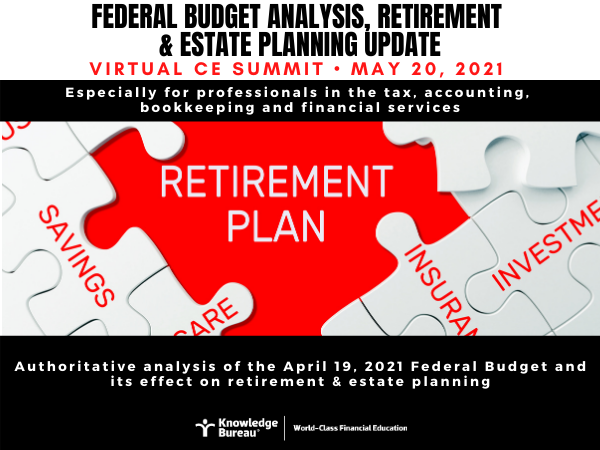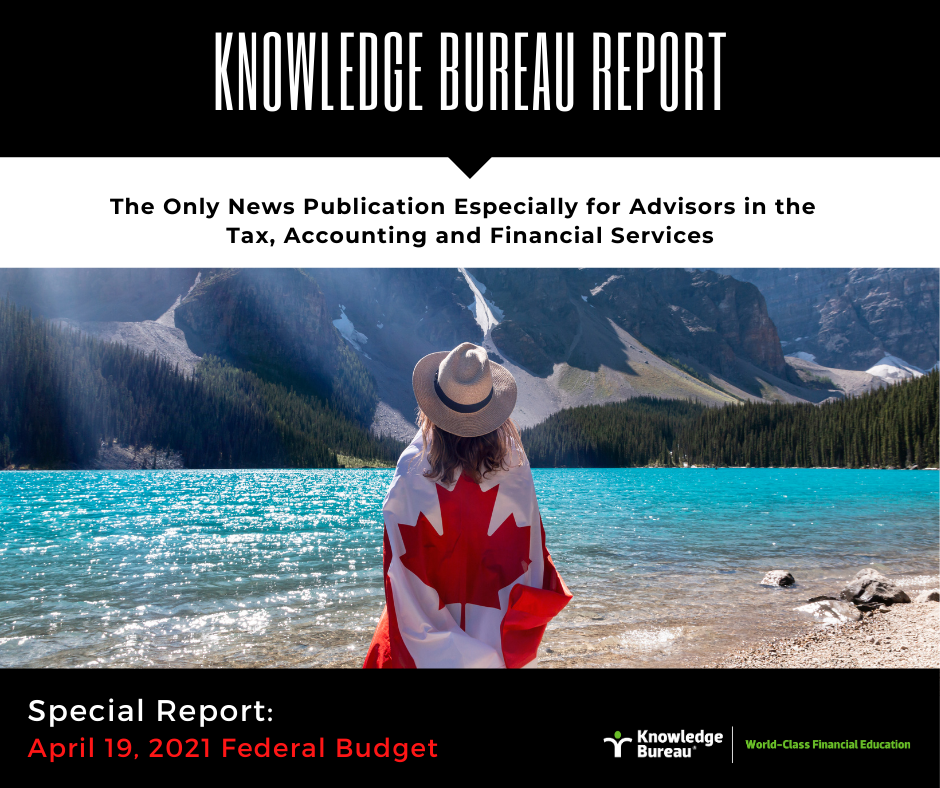Last updated: April 28 2021
Retirement: Budget Changes Trigger Planning Reviews

Evelyn Jacks
What did the April 19, 2020 Federal Budget tell us about required new approaches to retirement planning? Rising inflation is a new concern, and this requires a reworking of retirement projections, as well as projections for the funding of ongoing needs of survivors and heirs. More specifically, there are two tax provisions to take note of:
Retirement Investment Tweaks. The budget included provisions that would make it easier to fix contribution errors in defined contribution pensi on plans; specifically, to allow administrators, starting in the 2021 and subsequent tax years, to allow employees to correct for both under-contributions and over-contributions to their plan.
on plans; specifically, to allow administrators, starting in the 2021 and subsequent tax years, to allow employees to correct for both under-contributions and over-contributions to their plan.
Under-contributions could be fixed in any of the five preceding years (subject to a dollar limit) and over-contributions could be refunded to the employee or the employer depending on who made the contribution. Rather than amending T4 slips, the plan administrator will be allowed to file a prescribed form.
These changes will have an effect on the amount an employee can contribute to an RRSP for the tax year following the year in which any retroactive contribution is made. If negative RRSP room results, it will affect the employee’s contributions in future years. On the other hand, refunds of over-contributions will restore RRSP contribution room. Financial advisors and their clients will want to discuss these changes and opportunities to max-fund both RPPs and RRSPs to enhance tax efficient savings for retirement.
Retirees and Their New OAS Raises. It is clear that retirees over age 75 are in for an OAS raise starting in July 2022 and therefore those who have high income from ineligible (small business) dividends and RRIF balances may wish to pre-report such income in 2021 in order to avoid clawback zones and maximize the increased OAS payments in 2022.
The OAS clawback occurs in 2021 when individual net income reaches $79,845 and OAS is phased out completely when income reaches an estimated $129,417. These amounts are indexed to inflation. 
Also, the one-time payment of $500 to this cohort, provided that the recipient reaches age 75 or older as of June 2022, can be maximized with a charitable donation strategy in 2021. This payment will be received in August of 2021.
Advisors should also carefully determine required instalment payment requirements for June 15, September 15 and December 15 respectively. Add this question to your discovery checklist: do you expect your income to rise or fall in 2021? Then estimate instalments precisely to make sure money stays invested for future growth.
Excerpted from the Special Report on the 2021 Federal Budget. For your own copy, sign up to receive Knowledge Bureau Report in your inbox; then download the complete report.
Additional educational resources: RSVP now for an analysis of the April 19, 2021 budget and its impact on 2021/22 retirement and estate planning options at the May 20 Virtual CE Summit.
